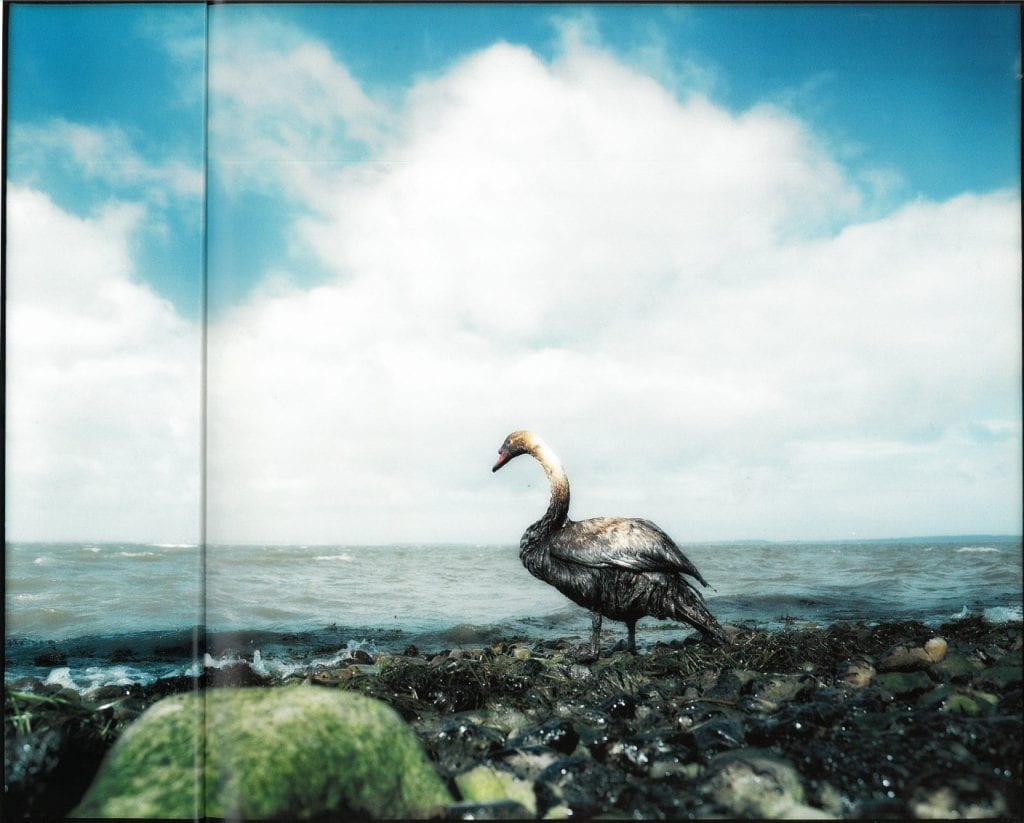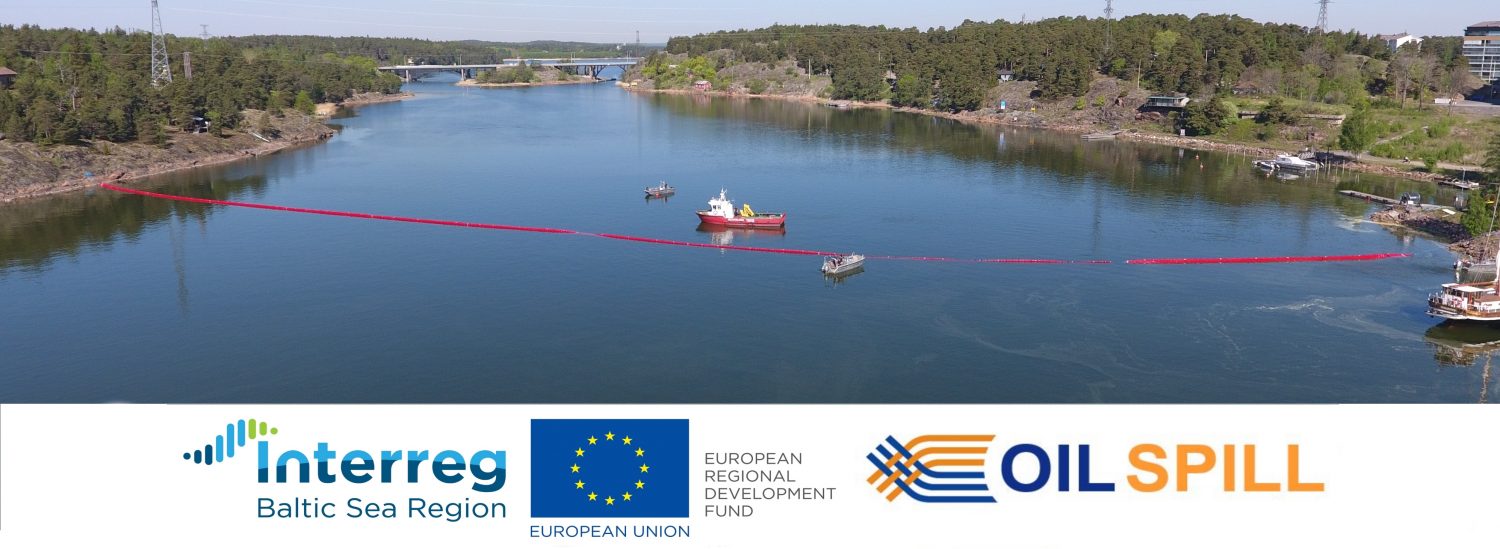The Baltic Carrier Accident in 2001 (4/4): What’s Next?
Written by Kia Friis Petersen, Danish Civil Protection League

In the three previous articles (here), the facts of the largest oil spill in Danish waters were presented. 2,700 tonnes of oil leaked from the bunker ship Baltic Carrier on 29 March 2001 near the island of Falster, Denmark. For two weeks, Danish, German, and Swedish authorities cooperated to contain and collect the oil on sea and in shallow waters. In the following months, the affected municipalities continued the cleaning operation on the shores. By the end of July 2001, a total of 10,750 tonnes of oil and oil contaminated material had been collected. But is there more to the story?
The environmental impact
Part of the area of Groensund is a Natura2000 area, with its special vegetation, marine animals, and breeding areas for wading birds. A study on the environmental impacts of the oil spill and cleaning operation concluded that there will not be irreversible damages (Storstroem County et.al, 2007). In the years after the accident, the levels of polycyclic aromatic compounds (PACs) were measured in the water, marine animals, and plants. The levels were back to normal in almost all areas in Groensund after three years. The amount of fish had also decreased in the area. In the first 5−6 months after the accident, the fishermen did not catch any fish in the area, but after eight months, they slowly returned (Teknologiraadet, 2003, p.99).
The most significant impact on the environment was on land, especially in marshland and reed beds, where heavy machines were used to collect the oil. It led to both direct and indirect damage. The oil was pushed into the sediments, thus degrading slower and affecting the area for a longer time. It was estimated that the vegetation should be restored within 5 to 8 years.
About 1,750 birds were collected during the cleaning operation, and in the evaluation report it is estimated that up to 4,000 birds had died as a result of the oil spill. However, the environment impact study estimates that as many as 20,000 birds died. If anything about the accident can be considered lucky, it was the time of year in relation to the breeding season. Most of the birds that annually come to the area to breed had not yet arrived. Although many birds died, the overall population of breeding birds has not decreased since.
Lessons learned
The evaluation report presents three overall recommendations. The first is to create an overall plan of tasks in the operational phases and harmonize the plans at the municipality, county, and state levels. The second is to make a risk analysis of the waters around Denmark so that the type, amount, and place of equipment can be adjusted. The third recommendation is to prioritize exercises and education in handling large and long-term accidents among all operational authorities.
The Baltic Carrier accident thus has led to several changes in the Danish Maritime Environmental Response and emergency services in general. Following the first recommendation, the Danish Act for the Protection of the Marine Environment has undergone small changes, and the Guideline for Beach Clean-up was re-evaluated completely.
After a thorough risk analysis of oil spill and other pollutions in Danish waters (COWI, 2007), the Ministry of Defence made a capacity analysis of the Danish Maritime Environmental Response in 2008 (Danish Navy, 2008). As a result, the Danish Emergency Management Agency (DEMA) purchased 18 new shallow water vessels that should all be fully operating by the end of 2020 (DEMA, 2020). In addition, the Navy’s preparedness plan for pollution of the sea by oil or other hazardous materials was updated. Also, most of the municipalities updated their response plans after the incident and again in 2008 when the new Guideline for Beach Clean-up was published.
When asked, Peter Søe mentions the two most important lessons he learned from the oil spill: the cooperation with private entrepreneurs and the importance of ongoing evaluation.
“We must admit that the immediate impressions, experiences and solutions during the operation were not noted down. And if you try to gather the information later on, it is already forgotten.”
These two lessons can be linked as the evaluation report only describes the enthusiasm and good work of the private entrepreneurs without mentioning the problems. They were either forgotten or not known by the people creating the report. Thus, it is clear that ongoing evaluation with all relevant actors did not take place during or right after the operation.
As this blog series has presented, several major lessons were learned from the Baltic Carrier accident. Regarding the lesson of ongoing evaluation, the Danish Maritime Environmental Response will do better in the future. It is acknowledged that learning from the accidents enables creating better ways of cooperation, communication, and knowledge-sharing.
One more time
What if the Baltic Carrier occurred again in Denmark? Can we handle it?
It is now almost 20 years since the accident, and many things have changed. The Danish Maritime Environmental Response has updated and exercised its plans, and new equipment has been purchased.
“We (the municipal fire and rescue services), can handle it. But it will not necessarily go better than last time. We have the experience from which we can draw now. However, other regions might not have the similar kind of experience,” says Peter Søe.
The four environment units used by the Navy are still the same, which means that the capacity and general functions have not changed. Thus, they should be able to handle a similar accident. Also, one small vessel has been purchased since the accident, which increases the number of the operational units in the Navy. However, the other vessels have become 20 years older and gained 20 years of wear.
In the best case, an accident like the Baltic Carrier will not happen again. To ensure that, a lot of prevention work has been done. The increased use of pilots and AIS (Automatic Identification System) (Rasmussen, J. S. et.al., 2003, p. 33-37), for instace, decreases the risk. In 2006, the Danish Defence Command also launched a project called “Marine Environmental Patrol,” which encourages sailors, fishermen, surfers, and other people who use the sea to spot and report pollution at sea. Today, the number of oil spills in Danish waters has reduced by half (Marine Environmental Patrol, 2020). However, this measure does not include accidents like the Baltic Carrier collision but concerns mostly the intended dumping of polluted water.
Have we already had “another Baltic Carrier” in Denmark? No. But there have been large oil spills. The bulk carrier Fu Shan Hai sank just off Bornholm’s coast after it collided with another ship in 2003. It was estimated that “only” 40 tonnes of the total 1,800 tonnes leaked from the ship. And in 2016, a tank on the harbor of Fredericia collapsed. The tank contained almost 4,000 tonnes of palm oil, which filled the harbor and sea. If you are interested to hear how this accident was handled, join the OIL SPILL Incident Management & Communication Seminar in Copenhagen in March 2021! (Stay tuned, more information will be published on our website.)
Since the Baltic Carrer incident, ship traffic has increased but the number of oil spills in Danish waters has decreased. But even though the ratio between ships and spills is getting better, we still must be prepared. The Danish Maritime Environmental Response has learned a lot since the accident, and laws, procedures, and equipment have been updated. Along with the participation in the OIL SPILL project, the preparedness in both Denmark and other countries of the Baltic Sea Region will be enhanced. Still, whether we can handle another Baltic Carrier, we will not know for sure unless it happens again. In the meanwhile, it is better to be and get prepared.
Sources:
- DEMA, Development unit (2001). Bekæmpelse af olieforureningen efter “Baltic Carrier” – En tværgående evaluering og erfaringsopsamling.
- COWI (2007). Risikoanalyse – Olie- og kemikalieforurening i danske farvande.
- Danish Navy (2008). Forsvarsministeriets kapacitetsundersøgelse vedrørende havmiljø.
- Peter Søe, Chief Fire Officer at Lolland-Falster Fire and Rescue Service (2020), interview.
- Rasmussen, J. S. et.al. (2003). Den Nationale Sårbarhedsudredning – Rapport fra underudvalget vedrørende akutte olie- og kemikalieforureningsulykker til søs.
- Storstroem County et.al. (2007). ”Baltic Carrier” olieforureningen – miljøeffekter 2001-2006.
- Teknologiraadet (2003). Olietransport gennem danske farvande – Folketingshøring 14. Maj 2003 i Folketingets Fællessal.
- DEMA (2020). Nye fartøjer effektive ved sønderjysk olieudslip.
- Marine Environmental Patrol (2020): Homepage.
- The Fu Shan Hai Project (2020): Homepage.

Leave a Reply